Showing 61–72 of 157 results
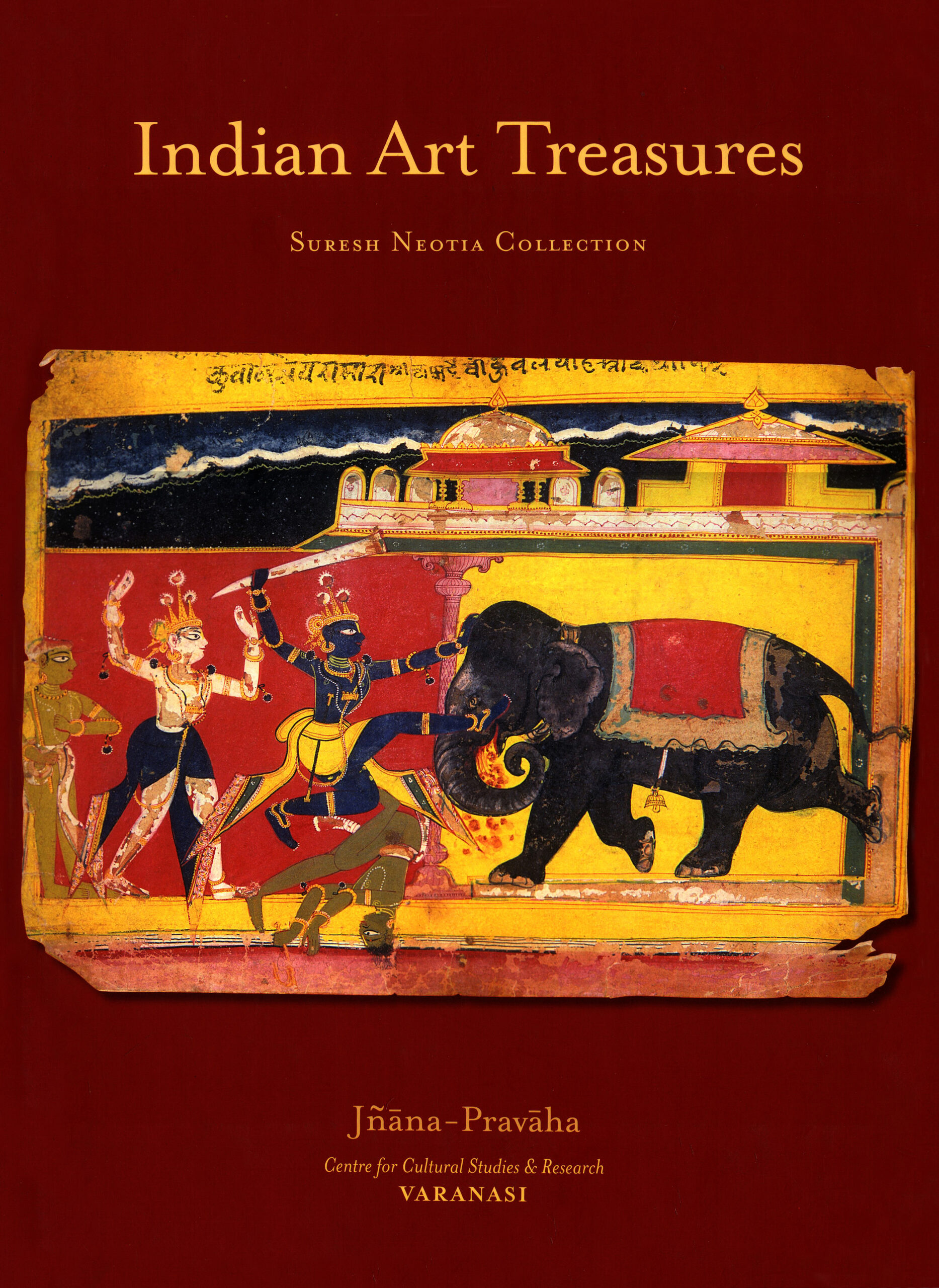
The book describes the priceless art objects collected and displayed at the Kalamandapa (the Museum) at Jnana-Pravaha, Varanasi. These objects include Indian miniature paintings, Tangkhas from Tibet and Nepal, stone sculptures and terracottas. Some of these objects have been presented for view in major national and international expositions.
Jnana-Pravaha, the Centre for Cultural Studies & Research at Varanasi represents the vision of its founders, Bimla Poddar and Suresh Neotia. It aims to serve and promote the cause of culture by rediscovering and highlighting its universal elements those that transcend all barriers. Jnana-Pravaha presents varied and scintillating forms of the visual and performing arts, and endeavours to create an awareness about the countrys cultural ethos and ethnic conventions. It is devoted to reviving and preserving old and obscure scripts which, while of immense significance for the reconstruction of the cultural history of the subcontinent, have been neglected to the point of being extinct. Through its educational and research programmes and publications, Jnana-Pravaha is engaged in the dissemination of our tangible and intangible heritage. All this is being accomplished with quiet zeal in a serene yet pleasing ambience. Situated on the left bank of the holy stream of Uttaravahini Ganga, Jnana-Pravaha faces the historical fort of Ramnagar on the other side of the river. While a well-equipped reference library on Indian culture, art, history, philosophy, literature and allied subjects caters to the needs of students and researchers, iterature and allied subjects caters to the needs of students and researchers, Kalamandapa (the Museum) presents a treasure trove of art dating from the pre-Mauryan age to the 20th century. The survey and documentation of local sites and antiquarian remains is emerging as an added attraction to art historians. Seminars, symposia and workshops on different themes form regular features of the Centres activities. In-depth studies of specific subjects are a hallmark of Jnana-Pravaha. Similarly, conducting special courses in early scripts like Brahmi and Kharoshti affirms the conviction of the Centre of the need to revitalise archaeological source material. An independent research project for deciphering and studying epigraphs and records has been launched with the appointment of Senior and Associate Fellows. Staging of Sanskrit plays is another Jnana-Pravaha annual event. The Vedas are the fountain of knowledge and are accepted as the earliest books of the world. To preserve their oriental style of learning and recitation, Jnana-Pravaha has established a city unit known as the Samskara & Anushthana Kendra. The emphasis is on the conventional and correct pronunciation of Vedic hymns. Young students undergo rigorous training in the Gurukula style under the close supervision of the Acaryas.
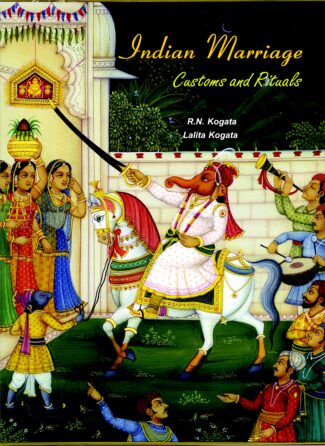
Marriage or Vivaah, particularly in India, is a sacred ceremony comprising various customs Þ religious and social Þ and Vedic rituals. These are meant to propitiate the gods for obtaining their blessings for the bride and the bridegroom, and to honour and entertain those who participate in the celebrations. This book explains in detail, all the important rituals which form part of the marriage.
Marriage is considered a very significant ritual for giving societys sanction to a close relationship between a man and a woman as husband and wife. It is, therefore, also called a social system. The marriage ceremony is a combination of many rituals, based on information contained in Hindu scriptures. It also represents and reflects the social customs and practices that are prevalent in the society. The rituals vary depending upon the community, the religion and the state where they are performed. The marriage customs, rites and rituals among royal families are mentioned in this book most of these rituals are followed by common people as well and are performed in the original or altered forms in the Indian society. Mr R.N. Kogata and Mrs Lalita Kogata did a lot of research and consulted several authorities and have written in detail about the various rituals involved in a human beings life from birth to death. Different scholars have mentioned different numbers of rituals and sacraments 25, 40 or 48. But Maharishi Veda Vyasa has described 16 rituals as important. Out of these, the Vivaah (marriage) samskaar itself encompasses various rituals the main ones covered in this book are: the Bindaulee (wedding procession); Hathalevaa (hand-taking ceremony or paanigrahan), Phere (agni pradakshinaa, circumambulation of fire); Kanyaadaan (giving away daughter in marriage); Maangbharaaye (filling vermilion); Mangalsutra (tying the wedding thread); Saptapadee (walking seven steps together); and Vadhu kee Vidaaee (brides departure to her in-laws house). This book should be in all households in order that all will know the meanings of the various rituals in a marriage particularly in the present days when learned pandits who can explain the rituals, are few, and people have no time or inclination to go through voluminous scriptures or texts on the subject of marriage.

This book extensively treats the subject of Indian temple jalas or grilles with an in-depth discussion basd on Vastusastra, for the first time with the aid of line drawings and illustrations. It brings within its purview Islamic screen and Gothic traceries also, for comparing and contrasting.
The present monograph is unique in that it, for the first time, extensively treats the subject of Indian temple jalas or grilles together with an in depth discussion in the light of relevant medieval vastusastra passages in Sanskrit on Indian architecture. Besides identification, classifica-tion, and description of the different grille types as well as their forms, features, and ornamentation, it investigates their purpose and their relationship with the environment as well as their functional engagement with the building of which each example is an integral part. It likewise traces the origins or at least the earliest incidences together with the development, wherever discernible, of the Indian grilles. While maintaining the thrust of writing towards the ancient and medieval Indian grilles, it brings within its purview the Islamic screens and the Gothic traceries for comparing and contrasting their characteristics with the earlier Indian. In the process, it also dwells on the factors of concept, form, function and, above all, aesthetics. The visual appearance of the jalas developed in each of these three architectural systems considerably varies due to environmental, creedal, cultural, and hence stylistic differences. The text of the monograph is elucidated by carefully drawn 55 line drawings and 348 photo illustrations. Being scholarly and, as a result, of academic disposition, it will not have the privilege of the company and prestige of coffee table books. It likewise cannot be a companion book for the icono-graphers who in India dominate the field of ancient art and pass as art historians, nor is it useful to the modernists and lovers exclusively of contemporary arts and literature. What is more, in orientation, treatment of theme, and the tenor of discussion, it adheres to the methodology of art history proper and, by the same token, not that of neo-art interpretatory, a different and new discipline which their protagonists, the Newtrendians in the West and because of them the Newtrendianoids in India, claim and proclaim as New art history, just as they look down at the other/original one by qualifying it as conventional, traditional, old-fashioned, and outmoded. They are largely unconcerned about history and chronology, socio-religious and cultural background, and ignore style, inherent concepts, philosophy, metaphysics, and aesthetics.

The book deals with evolution of Mughal architecture (ad 1526 to 1658) and explains the distinct characteristics of Mughal art the use of architectural material by the Mughals, their roofing techniques, their dome and the special features of the Mughal jharokha. Prof. Nath delves into the concepts and customs the Mughal architecture involved, discussing examples of monuments in detail.
It deals, extremely briefly, with the evolutionary process of Mughal Architecture, practically from Babur to Shah Jehan (1526 to 1658 ad). Instead of being an exotic phenomenon, as it is largely misunderstood, Mughal Architecture, like the Gupta art, was deeply rooted in the soil and it grew and developed not only on indigenous forms and techniques, but also on its concepts, customs and beliefs. It was owing to the decisive participation of native sources, in its development, that such a wonderful monument as the Taj Mahal could be built in India, and nowhere else. The Land, the People and the Culture have made it what it is, which is why it is so diametrically different from any other art of Islam. Written in a simple language, without the research jargon, and adequately illustrated, the book gives an authoritative appraisal of the subject with landmark examples.
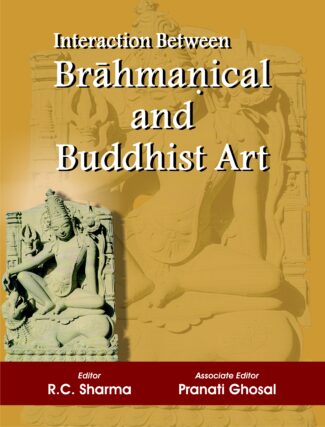
The present volume is an outcome of the expert discussion on the theories of Brahmanism and Buddhism, in an International meet at Jnana-Pravaha. Philosophical and artistic interaction between the two have been brilliantly discussed with references to famous places as well as texts to unravel basic principles.
Brahmanism and Buddhism adopted symbol and image worship almost simultaneously in the pre and early centuries of the Christian era. With the passage of time, the forms and plethora evolved and despite several distinctive features common elements between the two religions continue and fructified. The fact is revealed both at the philosophical and artistic levels. The present volume is the outcome of the well discussed theories by the experts, assembled in an International meet on the subject in the second week of February 2003 at Jnana-Pravaha, Varanasi, organized in the joint collaboration of Acharya Narendra Dev International Research Institute for Buddhist Studies, Lucknow. The book incorporates a good number of papers dealing with philosophical and artistic interaction between Brahmanism and Buddhism for more than a millennium years. The interaction was largely peaceful but there were certain phases in the Medieval period when clash also surfaced. It was most profound in the region of art and architecture, as a result of which some similarities as well as unique features between the two had emerged. All these aspects have been brilliantly discussed and specific references to famous places associated with Brahmanical and Buddhist arts in Asia as well as textual references to unravel basic iconographical principles have been adequately reflected in the present volume. The book besides being useful to scholars and students researching on ancient Indian art and architecture would appeal to general readers interested to know more about Indias glorious art traditions.
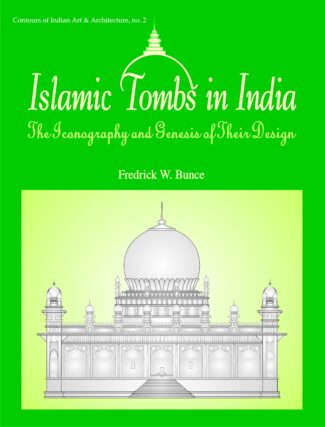
The book studies the architecture and iconography of some 36 Islamic tombs belonging to the period ad 1230 to 1754. Abounding in line drawings, it makes examines the monuments size, plan and elevation, the techniques of their construction, masonry and artisanship, and the relevance of each monument in the overall scheme of Indo-Islamic architectural development.
The work by an Indological scholar who has studied different architectural traditions of the world covers the architecture and iconography of some 36 Islamic tombs in India spanning a period of over 500 years from c. ad 1230 to 1754. It begins with a brief historical background to the Islamic rule in northern India and a discussion on burial practices and tomb types of the time to further understanding of the underlying concept of construction and functions of the tombs. Abounding in numerous line drawings of plans and elevations, and figures, it examines the influence of different traditions Buddhist and Hindu as well as other Asian and African and Mediterranean traditions on evolution of the form of Islamic tombs. It makes a detailed examination of the Indo-Islamic tombs under consideration: their description, size, plan and elevation including the interior space and application of the mandala patterns over the tomb structures, the techniques of construction, masonry and artisanship employed in them. It explains the place and relevance of each monument in the overall scheme of Indo-Islamic architectural development and growth as well as the importance of each by itself. It delves into the religious, philosophical and mathematical bases of the architecture and its application to tomb-building. The research also involves a comparative study of Indo-Islamic tombs vis-a-vis other architectural marvels of the world Islamic and non-Islamic. The book will be extremely relevant to scholars and students of Indian, particularly Indo-Islamic, iconography and those interested in Indo-Islamic cultural traditions in general.

This volume on the Golden City in Desert is focused on the history and life of the people of Jaisalmer, and their cultural, ethnic, religious, and social mores. This connoisseurs collection portrays how the Jaisalmeris celebrate their life in colour and the charm of the fort, palaces and temples as well.
This volume juxtaposes the history, culture, occupation and the lifestyle of people in the desert district of Jaisalmer of western Rajasthan, bordering Pakistan. Popularly called the Golden City in Desert, the city has much more to say beyond its popular fort and palaces. Jaisalmer was an old city of commercial magnitude for centuries till the onset of British rule in India. It was en route connecting the East and West in trade. It has now been transformed to a tourist destination, enticing people from India and abroad.
The book details its past glory, lost significance and the regained charm through centuries of developments. It also accounts for the brief history of Marwar, its rajas of valor, and their heroic struggle for existence and survival against foreign attacks. The picturesque portrayal of the fort, the people of Jaisalmer, their cultural, ethnic and religious mores, and the must see spots in the city are the quintessential focus of the book.
Moving away from the city life, the book also focuses on the village life, exploring the mysteries and charm of the desert life. It unearths the hidden charms and the warmth of village life in this desert region, alongwith a brief account of occupation of people around.
This connoisseur’s collection would motivate also researchers of ancient monuments and history, and enthuse tourists who would like to visit the Golden City in Desert.

The Book mainly deals with the historical importance of the Kalamukha movement in Karnataka and the existence of an exceptional school of arts which flourished under Kalamukha patronage, describing Somanatha temple at Haralahalli and the Kadambeshvara temple at Rattihalli with their architecture, iconography, epigraphy and religious and cultural background.
The Kalamukha temples in Karnataka are associated with the Lakulashaiva movement especially the beliefs and practices of the Kalamukha Shaivites and the jakkanacari style of temples in Karnataka. This volume is a study of two of the best examples of Kalamukha shrines in the region. It focuses on the Somanatheshvara temple at Haralahalli and Kadambeshvara temple at Rattihalli, splendid examples of conversion of single-cell shrines into triple sancta. With numrous illustrations of the temples including their plans and sculptures and referring to and quoting from the Agamas, the Puranas and other ancient works, it studies the architecture of the temples along with their history, the general plans of the temples, their interior including pillars, lintel and entrances, their external structure, and their iconography, particularly the main deities in the temples. It makes a unique effort to study the inscriptions associated with the temples which are in Kannada interlaced with Sanskrit verses and containing Sanskrit words, presenting their Roman transliteration and translation into English. The inscriptions include one on renovation of Someshvara temple by King Joma (ce 1181), one on the foundation of a temple of Daseshvara laid by Dasiraja (ce 1188) and one that eulogises the Kadambas and minister Soma (ce 1144).
The volume, with extensive notes that explain terms in a simple manner, will prove invaluable to scholars and students of Indology, especially those interested in early medieval religion, culture and architecture in South India.

Kalidasas world in of hallowed human grace, of emotional fulfilment and unsurpassed elegance of its habitat. Leading us to that rich, intimate and beautiful mind of Kalidasa are the nayikas of his plays and poems. The book sparkles with literary grace and painterly elegance and is a welcome addition to the world of Kalidasa.
To enter the mind of Kalidasa is to enter a world of colour and music, a world of beauty, of regal spaces and mythic narratives, of sensuous nayikas and sonorous sounds, of evocative words and ornamented phrases, of unhurried elegance and silken shringara, of serene hermitages and opulent havelis, of changing seasons with their unique flora and fauna, of pathways in the sky that look down upon the earth in their journey, and above all of the beauty of human emotions; in short it is a world of hallowed human grace, of emotional fulfilment and unsurpassed elegance of its habitat. Leading us to that rich, intimate and beautiful mind of Kalidasa are the nayikas of his plays and poems. To follow in their footsteps is to be coloured by the many hues of shringara, to be touched by the many textures of royal and political intrigue and above be enriched by a world of human longing and desire.
Harsha V. Dehejia leads a team of scholars who explore the many-faceted nayikas of Kalidasa and takes us into the hushed ambience of the havelis, palaces and ashrams of ancient India. Bringing these nayikas alive with paintings is the renowned miniaturist Vijay Sharma.
The book sparkles with literary grace and painterly elegance and is a welcome addition to the world of Kalidasa.

Kantha the embroidered poetry on cloth speaks volumes about the imagination of a woman and the aspirations that her craftwork reflects. This folk art emerged from a combination of materialistic circumstances and daily needs, climate, geography and economic factors. The motifs embroidered were influenced by religious beliefs and superstitions, and of course what the women saw around them.
Kantha the embroidered poetry on cloth speaks volumes about the imagination of Bengali women and the aspirations that her craftwork reflects. It is a well-conceived art work, which has always attracted people from all walks of life. She creates the most amazing Kanthas with great love and affection for her dear ones. Her creativity stands unmatched when she breathes life into a discarded saree, worn out from constant use and laundering. She transforms this simple five metres of old cloth into a most admirable, attractive and unparalleled utilitarian artefact. Initially, light coverlets or quilts to withstand the mild winters and cool monsoon nights of Bengal – were made using the Kantha embroideries, which was limited to simple stitches and a few colours. Some Kanthas were used as swaddling clothes for babies; expectant mothers spent their last stages of pregnancy in making a Kantha for the new born, with the belief that this piece of cloth would bring good fortune for the family and protect the baby from diseases. Every home in a Bengali village housed a number of Kanthas that were more for personal use than commercial gain. This folk art emerged from a combination of materialistic circumstances and daily needs, climate, geography and economic factors. The motifs embroidered were influenced by religious beliefs and superstitions, and of course what the women saw around them. These motifs embroidered in the simplest of running stitches, speak of folk beliefs and practices, religious ideas, themes and characters from mythology and epics, flora, fauna, man and nature; they also reflect the social and personal life of people in their own way.
Kantha signifies a poor man’s wrap consisting of old used up cloth patched up and sewn into a single garment. It seems probable that patch works Kantha constituted the original form of Kanthas and that Kanthas of a decorative appliqué type were evolved from this.
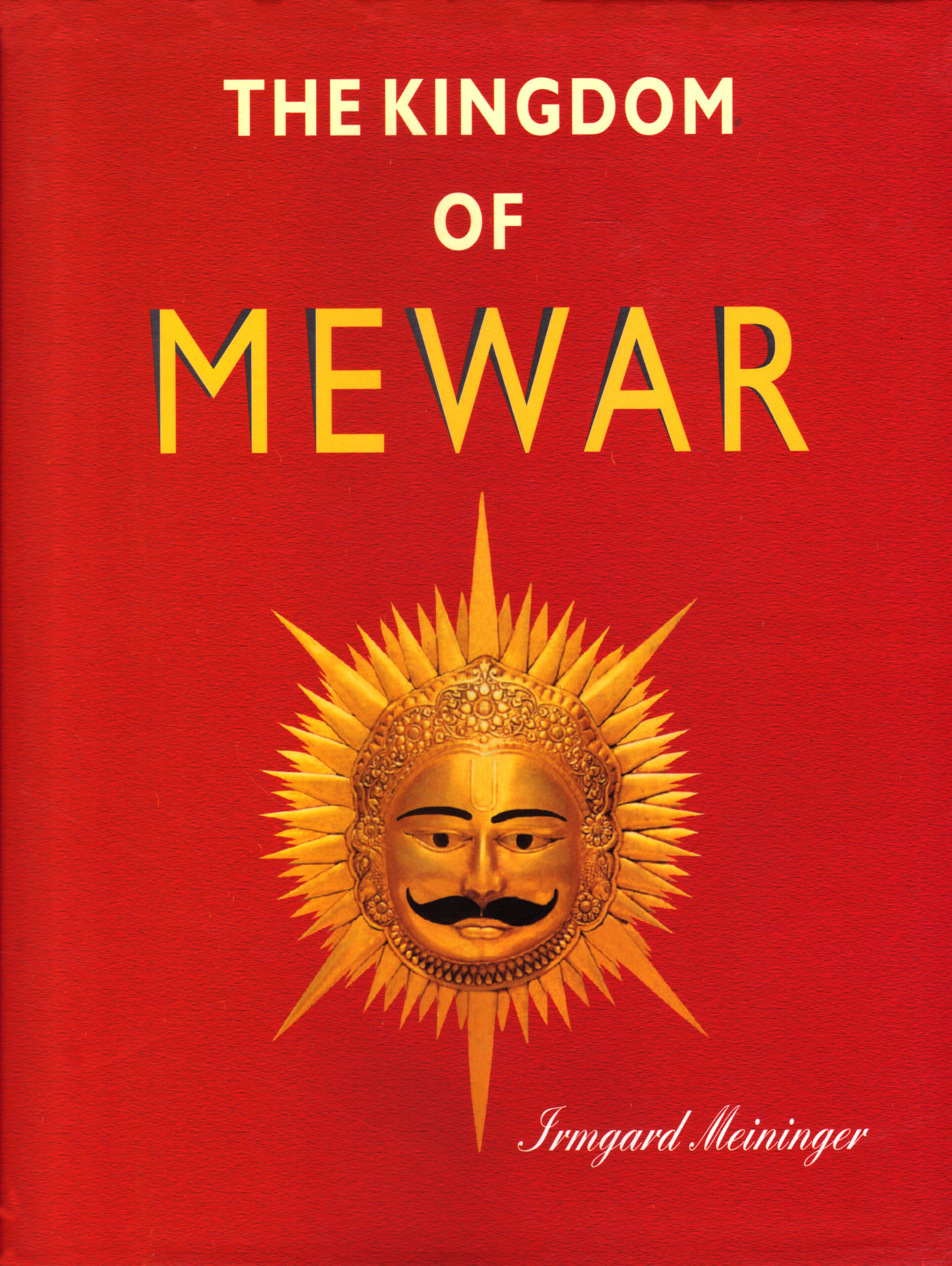
Supported by beautiful illustrations, the study reconstructs the glorious history of the Rajput house of Mewar, perhaps the worlds oldest ruling family. It recounts its heroic battlefield engagements and examines its artistic and literary achievements.
A Premier princely state of Rajsthan, the erstwhile Rajputana (northwest India), till its merger into the Union territory in 1948, Mewar has been celebrated in history and legend. In this far-famed region are best represented not only the Rajput chivalry and high sense of honour, but also their arts, architecture, and fabulous cultural traditions. Developed from the authors four-year long intensive research, the book tries to reconstruct the unparalleled, glorious history of (perhaps) the worlds oldest ruling family: the house of Mewar now called the clan of Sisodias, in earliest times Guhilots. Tracing chronologically the entire course of events since their first known ancestor, Guhil (ad 566), Irmgard Meininger here unfolds a compelling story of brave Rajput men and women, with an exaggerated sense of honour, pride and independence the story of their triumphs and tragedies, and simultaneously of palace intrigues and rivalries, and of supreme sacrifies and treacheries. And yet, in the main, it is an exciting story of Mewars heroic resistance: first to Afghan/Arab adventures and Delhi Sultans and, in the later days, to the Mughal imperialists. Weaving into her narrative the legendary episodes around Maharani Padminis fabulous beauty, the dread rite jauhar, Panna Dais unique loyalty, and Princess Miras bhakti, among others, the author also attempts to show how Mewar has been the repository not only of old Hindu traditions, but of the enchanting Rajput culture as well, and how Rajputs, notwithstanding their endless engagements in the battlefield, were great patrons of art, architecture, literature and music. Supported by numerous beautiful illustrations, bibliographic references and a glossary of non-English words, the book will fascinate anyone interested in India, particularly Rajasthan: whether as an inquisitive reader, tourist, hostorian, or a connoisseur of art.
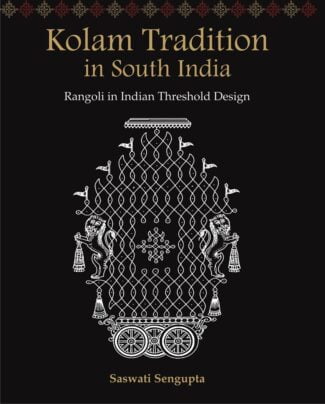
Kolam is propitious threshold drawings by women defining religious and cultural space in South India. Integrating the entire Tamil community in kinship, ephemeral kolam structure is precise and beautiful prayer for protection and prosperity. Aesthetic experience of kolam is in its symmetrical composition that correlates with our concept of the cosmos.
Kolam is propitious threshold drawings by women defining religious and cultural space in South India. Integrating the entire Tamil community in kinship, ephemeral kolam structure is precise and beautiful prayer for protection and prosperity. Aesthetic experience of kolam is in its symmetrical composition that correlates with our concept of the cosmos. In the geometric grid of kolam the number of dots called pulli algorithmically guides the number of crossings that requires overall smoothening of edges in the design. Large number of infinite knot pattern follows a set of elegant mathematical rules that is at the same time artistic. According to Marcia Ascher, Emeritus Professor of Mathematics at Ithaca College, the Principles of Numbers in kolam is dynamics and motion in matter demonstrating multiplicity of the void. Kolam drawings trace unilinear path with singular regularity expressive of polyrhythmic music. Dancer Chandralekha observed that kolam is a kind of yoga. Kolam as an art form has entered computer graphics, ethnomathematics and ethnomusicology, textile industry, therapeutic applications and tactile spatial education for visually challenged. The pervasive threshold drawing of Tamil Nadu are unique but at the same time kolam is extendable to the tradition of tracing patterns in sand produced by several cultures in Africa and South Pacific islands as well as to the brilliant mosaics of ancient Rome.
| There are no products |